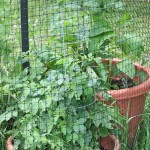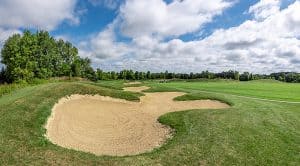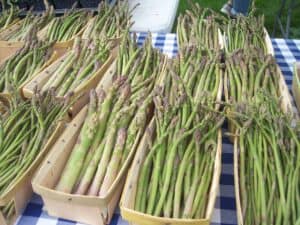
(Chelsea Update would like to thank Jennifer Fairfield for the information in this column.)
Here’s what we really should be doing this month in the gardens.
In the veggie garden:
If you haven’t gotten your veggies planted yet, don’t wait any longer. We have a short growing season, and many of the things we all love to grow – tomatoes, peppers, cucumbers, squash, etc. – all need long growing periods to produce a good crop. So get them in now.
Plant seeds of carrots, bush beans, dill and cilantro every week or two. This way, you can be sure to have a continuous harvest throughout the season. Be sure to read the package information about how long each variety you are planting needs to mature. Figuring that our first frost usually hits around Oct. 15, you can determine how late you can plant things and still hope to get a good harvest.
For anything that needs support, be sure to get stakes or cages in at the time you plant so that you don’t damage roots later. Be sure to mulch them at the time of planting, too. Mulch does a number of great things for your plants – it keeps the soil temperature consistent, suppresses weeds, helps retain moisture, and helps prevent soil-borne diseases from spreading to your plants.
Spray tomatoes, cucumbers, and squash with an organic fungicide early and often. Begin as soon as you get the plants in the ground, and follow the manufacturer’s instructions for frequency (usually weekly). The last couple of years, we have had lots of disease pressure including blight, powdery mildew, and downy mildew, which can only be prevented, not cured.
Spraying on a weekly basis can help prevent the diseases from getting started, as can making sure to space your plants properly. Good airflow through the garden helps things dry out in between rains, which helps keep spores from growing. If you’re not sure what sort of fungicide to use on your plants, come talk to me – I’m happy to make recommendations.
Weeding
Weeding is an important part of keeping your plants healthy and producing, even if it’s not everyone’s favorite chore. Weeds compete for water and nutrients, and they can also be disease carriers. Doing a little weeding every time you’re in the garden can make it seem a little less tedious, and getting weeds before they get too big is so much easier than waiting until they are towering over everything.
Be sure to immediately and thoroughly water anything you plant, and make sure the soil is kept moist where you sow seeds. Newly transplanted plants aren’t as efficient at taking up water as those that have been in the ground for a time, and can easily get dried out.
Seeds also need moisture in order to germinate, so be sure to give the whole garden a good drink whenever we aren’t getting sufficient rain. And if the last couple of weeks are any indication, I think we’re in for one of those summers where we will be watering constantly.
In the flower garden:
Plant summer-blooming bulbs if you haven’t already. This includes dahlias, gladiolus, lilies, begonias and canna lilies.
Wait to trim back the foliage of your spring blooming bulbs, such as daffodils, tulips and alliums, until the foliage has died completely. Although you may be tempted to trim them sooner to tidy up, leaving the foliage will help the bulb use the sun’s energy to feed itself for next year’s blooms.
Perennials
June is prime planting time for perennials and annuals, but be sure to water them in well when you plant them, and keep them well-watered throughout the season.
Perennials will be spending the summer putting out lots of roots so that they can be well-established when winter hits. Those roots need good watering in order to grow well, and new roots aren’t as efficient at taking up water as established roots. Annuals, on the other hand, will spend the season putting on a show – they know they won’t make it past this season, so they concentrate on creating seeds, which generally come from flowers, so you end up with lots of flowers.
Keep them deadheaded, and they will just keep on producing more flowers in an attempt to produce seeds. Just remember that all that flower production needs water.
Annuals
Annuals also need to be fertilized regularly throughout the season. Producing flowers takes a lot of energy, which uses up a lot of nutrients. Perennials generally only need one application of fertilizer each spring. For both types, a low-nitrogen, high-phosphorus fertilizer is best. Too much nitrogen can produce lots of foliage, but not a lot of flowers, and can cause some plants to get leggy and flop over.
The secret to keeping your container plantings blooming all summer long is to keep them fed and watered. As containers fill up with roots, they don’t hold water very well, so you need to be sure to keep them watered. And, since the plants are in a container, they can’t get their nutrients from the soil around them, unless you provide it. Just be careful not to over-water or over-fertilize, especially with chemical fertilizers. Too much of a chemical fertilizer can “burn” your plants – a sure way to kill them. Too much water will drown them.
Aphids
In the last week or two, I’ve had a number of people come in or call, asking about pests they are seeing. So far, the biggest culprit seems to be aphids. While most healthy, mature plants can easily withstand a few of them, the biggest problem with aphids is that they reproduce like crazy, and tend to really like tender, new growth. So the key to keeping them from causing permanent damage is to keep a close eye out for them and get them before there are so many that they overwhelm your plants.
Be sure to identify who is doing the damage before you reach for the insecticide though – the right solution depends on the pest.
(Part two will run tomorrow.)
















